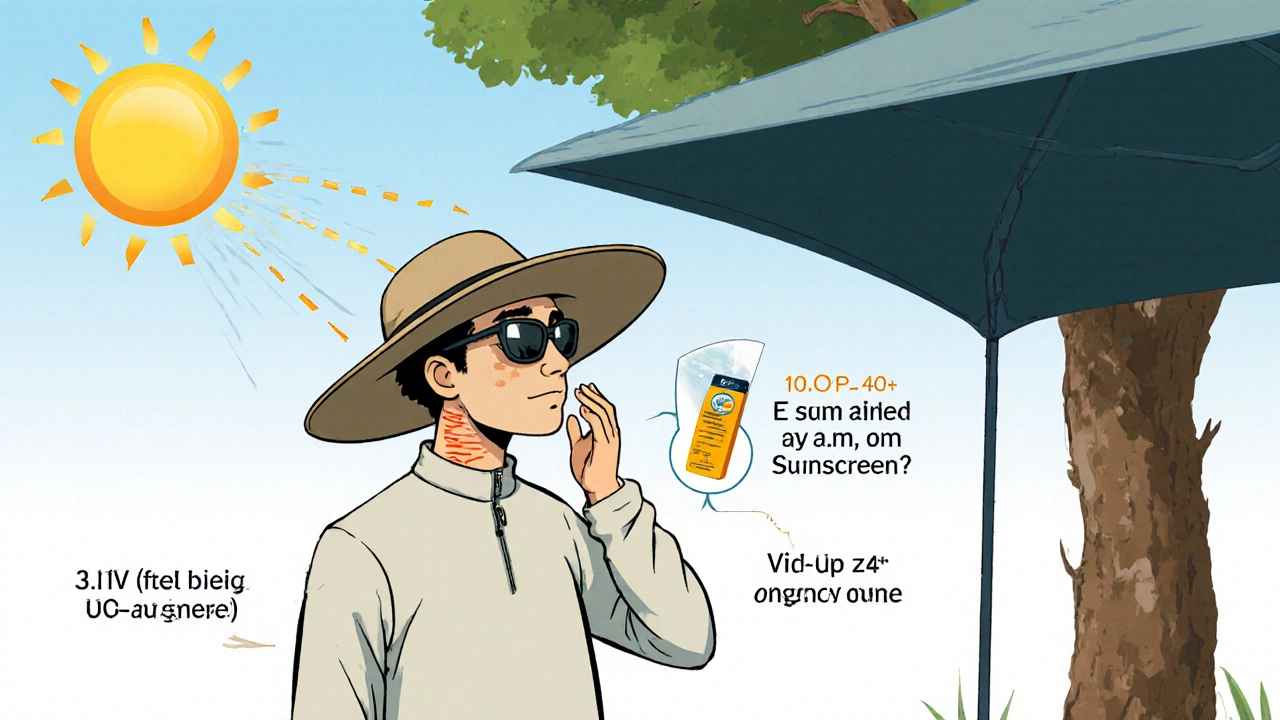When your skin reacts to sunlight like it’s on fire, you’re dealing with photosensitivity, an abnormal reaction of the skin to ultraviolet (UV) or visible light, often triggered by medications or underlying health conditions. Also known as light sensitivity, it’s not just a bad sunburn—it’s your body’s unexpected response to something most people handle just fine. This isn’t rare. Thousands of people take common pills—antibiotics, blood pressure meds, even some allergy drugs—and never realize they’re walking around with a ticking time bomb under their skin.
Some drugs don’t just treat your condition—they make your skin more vulnerable to sunlight. Fluoroquinolone antibiotics, a class of antibiotics including ciprofloxacin and levofloxacin, are known to cause severe sunburns after minimal exposure. NSAIDs, like ibuprofen and naproxen, can do the same, especially when taken regularly. Even dexamethasone, a powerful steroid used for inflammation, can increase your risk. These aren’t side effects you’ll find on every label, but they’re real, documented, and often missed until it’s too late.
It’s not just pills. Some herbal supplements—like St. John’s wort or certain citrus extracts—can trigger reactions too. And if you’re on long-term treatment for something like high blood pressure, lupus, or an autoimmune disorder, your risk goes up. Photosensitivity doesn’t always show up right away. Sometimes it takes weeks of sun exposure before your skin starts to blister or darken in patches. You might think you’re just getting a bad tan, but it’s your body screaming that something in your medicine cabinet is reacting with the sun.
Knowing this isn’t about fear—it’s about control. If you’re on any medication, especially one you’ve taken for a while, check if it’s linked to light sensitivity. Look at the FDA Medication Guide. Ask your pharmacist. Don’t wait for a bad reaction to teach you. And if you’ve ever burned faster than anyone else in the group, even with sunscreen, that’s a clue. The posts below cover real cases, drug interactions, and practical steps to protect yourself—from reading labels to choosing safer alternatives. You don’t have to avoid the sun forever. You just need to know what’s making your skin vulnerable.

Learn how to prevent painful photosensitivity reactions with proven sun protection strategies, including SPF 50+ sunscreen, UPF clothing, window film, and avoiding common triggers like medications and skincare products.